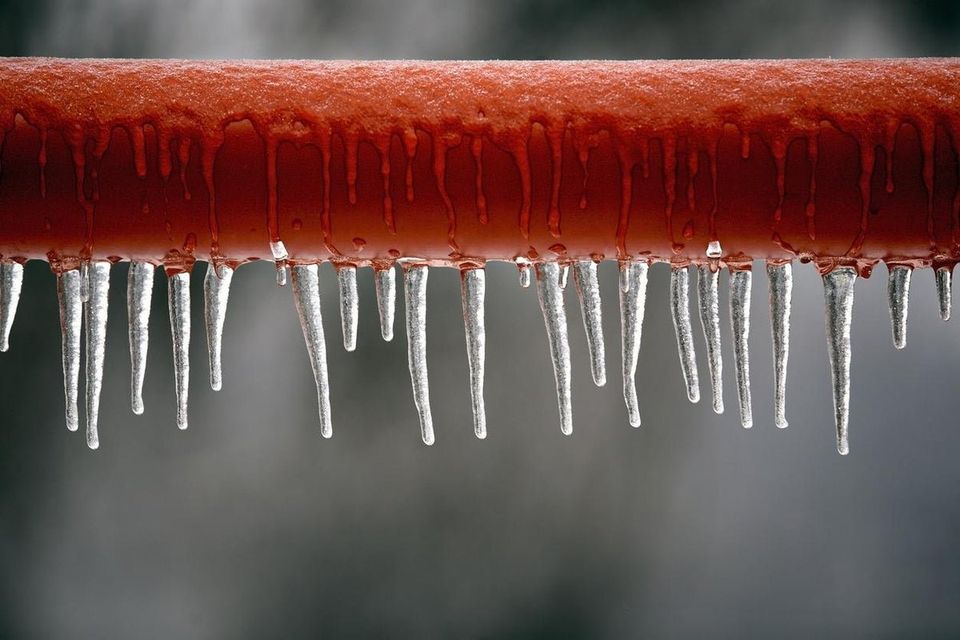Tips to Avoid Frozen Pipes in Cold Weather: Expert Guidance
Tips to Avoid Frozen Pipes in Cold Weather: Expert Guidance
Blog Article
Here down the page you can find a bunch of helpful advice pertaining to 6 Ways to Prevent Frozen Pipes.

Cold weather can ruin your pipes, particularly by freezing pipelines. Here's exactly how to prevent it from occurring and what to do if it does.
Introduction
As temperature levels drop, the risk of frozen pipelines increases, potentially resulting in pricey repairs and water damages. Recognizing how to stop frozen pipelines is critical for house owners in chilly environments.
Comprehending Icy Pipes
What causes pipes to freeze?
Pipelines ice up when subjected to temperature levels below 32 ° F (0 ° C) for expanded periods. As water inside the pipelines freezes, it broadens, taxing the pipe walls and potentially triggering them to break.
Risks and problems
Icy pipes can result in water disruptions, property damage, and costly repairs. Burst pipes can flooding homes and create comprehensive architectural damages.
Signs of Frozen Water Lines
Recognizing icy pipes early can avoid them from rupturing.
How to determine frozen pipes
Try to find lowered water circulation from taps, unusual odors or noises from pipes, and noticeable frost on exposed pipes.
Prevention Tips
Insulating vulnerable pipelines
Cover pipelines in insulation sleeves or utilize warm tape to secure them from freezing temperature levels. Concentrate on pipes in unheated or exterior areas of the home.
Home heating strategies
Maintain interior rooms properly heated, especially locations with plumbing. Open cupboard doors to allow warm air to circulate around pipes under sinks.
Protecting Outside Plumbing
Yard pipes and outdoor taps
Detach and drain yard pipes before winter. Mount frost-proof spigots or cover exterior taps with insulated caps.
What to Do If Your Pipelines Freeze
Immediate actions to take
If you presume icy pipes, maintain taps open up to ease stress as the ice thaws. Use a hairdryer or towels soaked in hot water to thaw pipelines gradually.
Long-Term Solutions
Structural adjustments
Take into consideration rerouting pipes away from outside wall surfaces or unheated areas. Add added insulation to attic rooms, basements, and crawl spaces.
Updating insulation
Invest in premium insulation for pipelines, attic rooms, and walls. Appropriate insulation assists keep consistent temperature levels and minimizes the risk of icy pipelines.
Conclusion
Protecting against frozen pipes needs proactive procedures and quick responses. By recognizing the reasons, signs, and safety nets, house owners can shield their pipes during winter.
6 Proven Ways to Prevent Frozen Pipes and Protect Your Home
Disconnect and Drain Garden Hoses
Before winter arrives, start by disconnecting your garden hoses and draining any remaining water. Close the shut-off valves that supply outdoor hose bibs and leave the outdoor faucet open to allow any residual water to drain. For extra protection, consider using faucet covers throughout the colder months. It’s also important to drain water from any sprinkler supply lines following the manufacturer’s directions.
Insulate Exposed Pipes
Insulating your pipes is an effective way to prevent freezing. Pipe insulation is readily available at home improvement stores and is relatively inexpensive. Pay close attention to pipes in unheated areas such as the attic, basement, crawl spaces, or garage. Apply foam insulation generously to create a buffer against the cold. You can also wrap your pipes in heat tape or thermostat-controlled heat cables for added warmth.
Seal Air Leaks
Inspect your home for any cracks or openings that could let in cold air. Seal any holes around the piping in interior or exterior walls, as well as the sill plates where your home rests on its foundation. Additionally, make sure to keep your garage door closed unless you’re entering or exiting. Leaving it open creates a significant air leak that can lead to frozen pipes.
Allow Warm Air Circulation
During cold snaps, it’s essential to allow warm air to circulate evenly throughout your home. Leave interior doors ajar to promote better airflow. Open kitchen and bathroom cabinets to help distribute heat consistently around the rooms. If you have small children or pets, be sure to remove any household chemicals or potentially harmful cleaners from open cabinets for safety.
Let Faucets Drip
A small trickle of water can make a big difference in preventing ice formation inside your pipes. When temperatures drop significantly, start a drip of water from all faucets served by exposed pipes. This continuous flow helps prevent the water from freezing. Additionally, running a few faucets slightly can relieve pressure inside the pipes, reducing the chances of a rupture if the water inside does freeze.
https://choateshvac.com/6-proven-ways-to-prevent-frozen-pipes-and-protect-your-home/

As a serious person who reads about How to prepare your home plumbing for winter weather, I figured sharing that excerpt was a good idea. If you please take the time to share this blog post if you enjoyed reading it. I love your readership.
Estimate Free Report this page